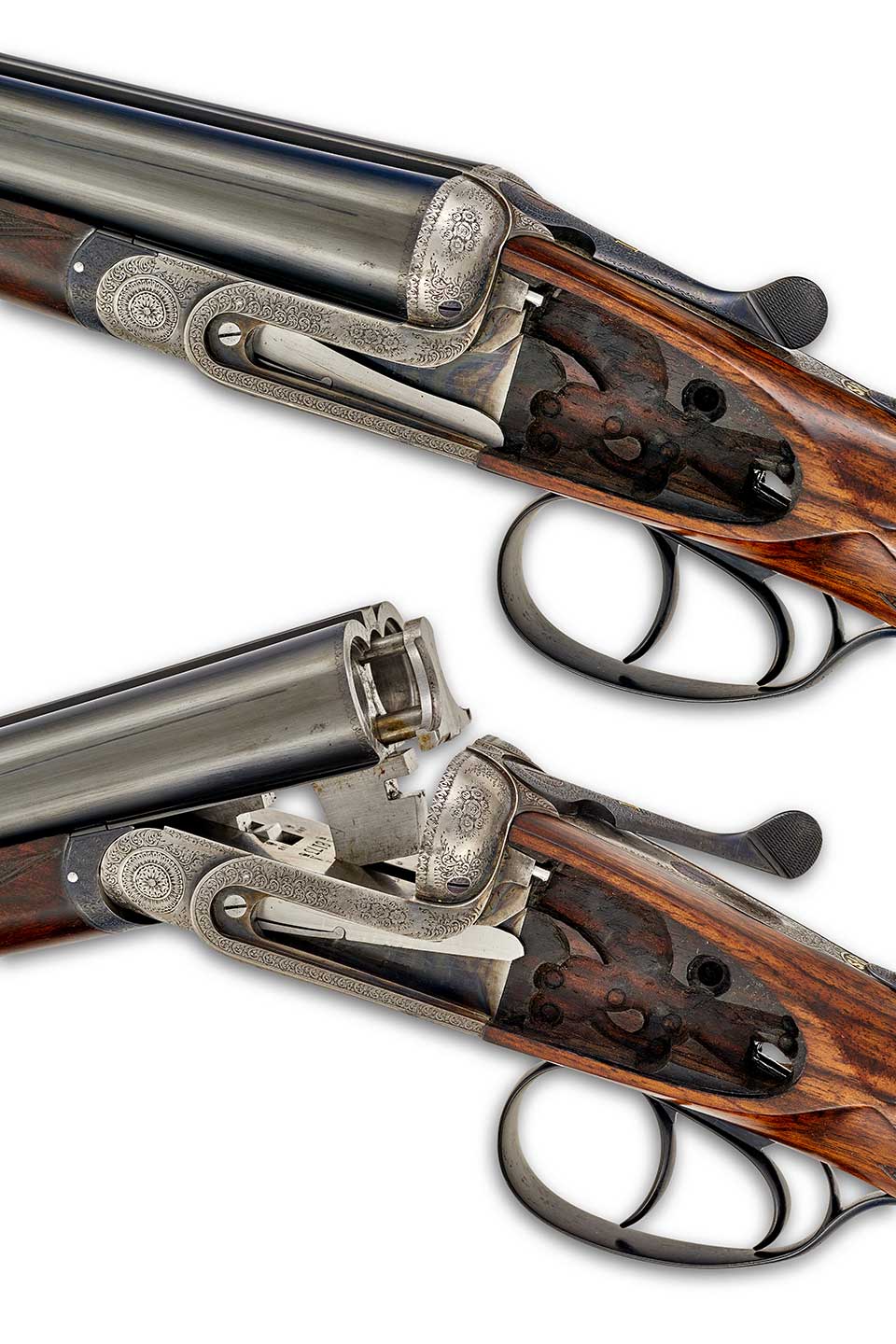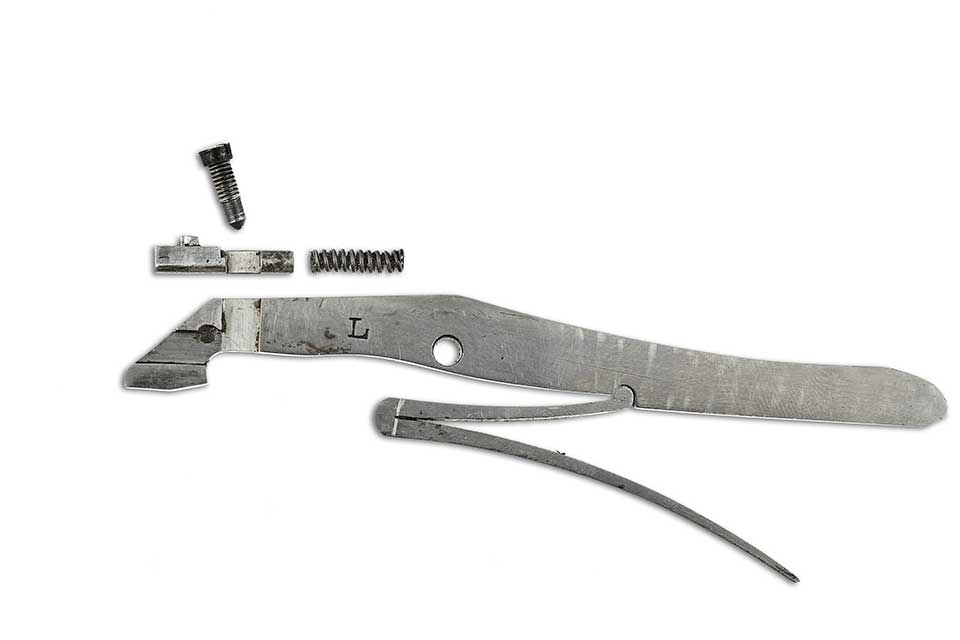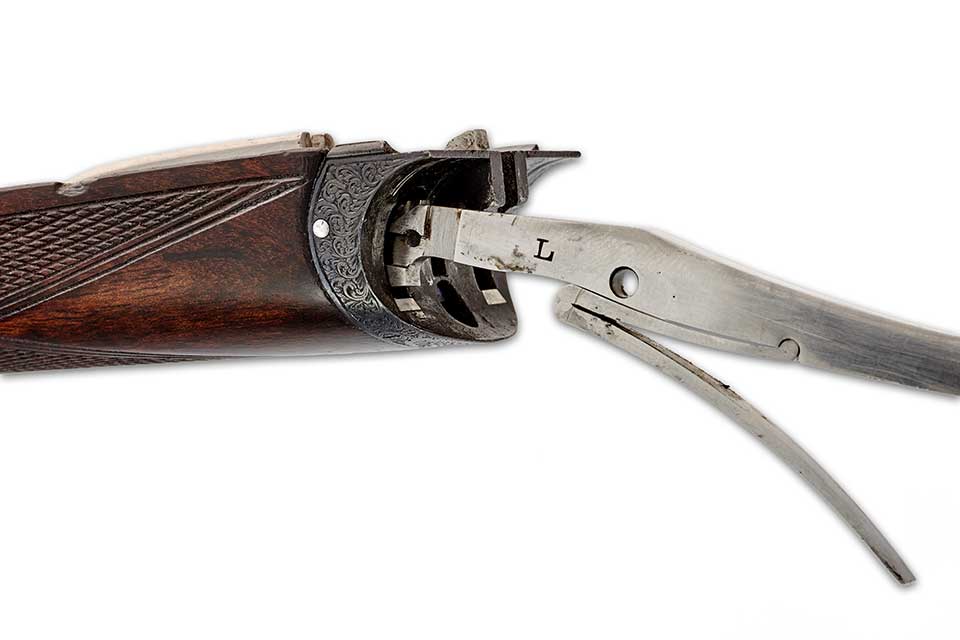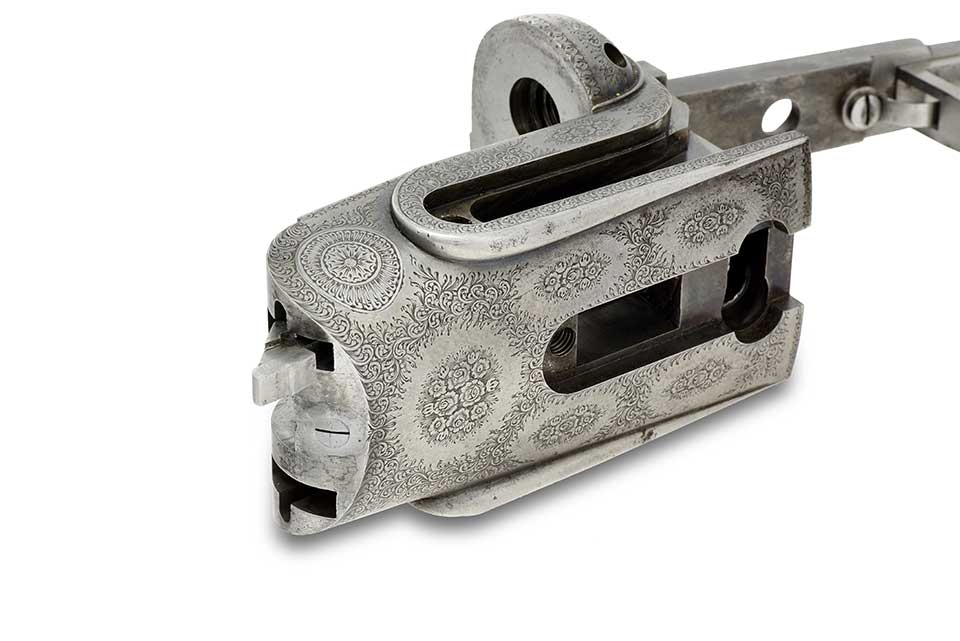No bespoke gunmaker was immune to the Great Depression, but Boss & Co. fared relatively better than many of its competitors in Britain. While the unemployed stood in line for soup and the middle class scrabbled for jobs grown scarce, enough of the world’s capitalists, especially in America, remained rich enough to afford luxuries, like best London guns.
In his illuminating history of the gunmaker, Donald Dallas notes that during the 1920s and ‘30s about half of Boss’s new gun orders came from the United States. Each year during the ‘30s, Boss’s management embarked upon a three-month-long sales trip to the States, and New York’s prestigious Abercrombie & Fitch was named the firm’s agent and importer.
Boss guns appealed to wealthy American shooters: its over/under was the world’s most elegant (and Americans increasingly liked over/unders) and its side-by-sides could be fitted with one of the best single triggers of the day. The firm went to great lengths to keep many of its skilled craftsmen, even through the leanest years of the decade, which maintained the impeccable standards of beauty and quality that had established Boss’s reputation as a “builder of best guns only.”
Yet, most of Britain’s traditional break-action shotgun designs were growing long in the tooth; and Boss guns, no matter how gorgeous, were no different. Its side-by-sides were the product of owner John Robertson’s ingenuity in the 1880s and ‘90s, and even his influential over/under of 1909 was two decades and a world war in the past. Robertson’s last patent had come in 1915; for a grenade thrower, not a sporting gun.
There’s little reason to think that consumers of the day placed much less of a premium on the novel and the new than we do today—the period popularity of “new” ultra-lightweight guns and E.J. Churchill’s adroitly promoted short-barreled XXVs are good examples. Though little could be done to radically transform the mechanics of designs that had long been perfected, clever gunmakers could find ways to tweak them—and adding a self-opening feature gave the Boss side-by-side a fresh face during an era when making sales was not a matter of profit but of survival.
Company records indicate Boss introduced its self-opener around 1933, giving it a type of gun that rivals Purdey and Holland & Holland possessed but that it had heretofore lacked—a gun that would open on its own accord whether it had been fired or not when the shooter turned the toplever.
By virtue of its 1897 ejector design, Boss’s existing side-by-side was already an “assisted opener”—that is, when the gun had not been fired and was opened, coil springs in the forend-mounted mechanism pressed a slide against the legs of the extractors, which in turn pushed them against the breech-face of the action, creating pressure to help rotate the barrels down and open. This assisted-opening (or “easy opening”) aspect disappeared, however, when the gun had been fired: in this case the ejector slide was locked in place under spring tension until a sear (called a “tipper”) was tripped when the barrels reached the open position, thus releasing the slide and extractors to expel the empty cases with considerable force.
Craftsmen who build Boss-patent ejectors today inform me they are not at all easy to make, but when properly made they are durable and very reliable—and possess the chief virtue of extracting an unfired cartridge farther from the breeches of the barrels than do most conventional ejectors, making shells easier to grab and remove. Experts also tend to think the assisted-opening element of the Boss ejector is largely incidental to its primary purposes of extracting and ejecting.
A true self-opener, on the other hand, opens whether shot or not. The beauty of Boss’s 1930’s version is that it caused no ruination of the gun’s sterling, streamlined aesthetics, nor did it tamper with the function of the ejectors, single trigger, or locks. The Boss sidelock became a self-opener when two compact-but-powerful V-springs (one per side) were placed under the two lifters (or “cocking levers”) in the body of the action. When the underbolt holding the barrels down was withdrawn by a turn of the toplever, the upper legs of the V-springs were free to force the tail of the lifter up, and its nose down, thus exerting leverage—as craftsman David Trevallion once told me—“with a vengeance” to the forend iron to “spring” the gun open.
The mechanism and its properties are best understood in connection with the photos below, in this case of Boss No. 8173, one of a pair of 16-gauge self-openers ordered by one A. Green in April 1936. The next photograph shows the dis-assembeld Self-Opener components (Left Side)
The next photograph shows the dis-assembeld Self-Opener components (Left Side)
 The Boss self-opener was a short-lived design—according to Dallas’s research most were made between 1933 and ’37; a few were finished shortly after the Second World War. Boss records show 56 on the books, but this doesn’t account for all—there are examples where the record does not indicate a self-opener, yet the existing gun is. Boss No. 8173 is just one such example. How many were completed is a matter of conjecture, but it is true enough to say Boss self-opener are more-than-rare. Many seem to have been ordered by Americans, and were imported to this country by A&F.
The Boss self-opener was a short-lived design—according to Dallas’s research most were made between 1933 and ’37; a few were finished shortly after the Second World War. Boss records show 56 on the books, but this doesn’t account for all—there are examples where the record does not indicate a self-opener, yet the existing gun is. Boss No. 8173 is just one such example. How many were completed is a matter of conjecture, but it is true enough to say Boss self-opener are more-than-rare. Many seem to have been ordered by Americans, and were imported to this country by A&F.
British gunmaker Robin Brown—who serviced No. 8173 and disassembled it for photographs—finds the craftsmanship it embodies “virtually faultless.” The design’s greatest attribute, Brown thinks, is not its spring-opening feature, rather that the V-springs hold the barrels open “hard on the gape”—in other words, forced fully down and open to a position of maximum drop with no creep back or up-and-down play, an aid to rapid reloading, what Brown calls a “best-quality refinement,” and a feature with merit when driven grouse are rocketing past. Nor does the Boss seem difficult to close; a friend who owns a Boss self-opener in pigeon-gun configuration says the extra effort to close the gun is “barely noticeable.” For all its apparent qualities, the design was never patented, and in modern times Boss has not revived its manufacture. In recent years, however, when W.W. Greener’s Richard Tandy was working for the trade he made three self-openers faithful to the original Boss design for a highly regarded independent gunmaker, making Tandy one of the few living craftsmen who has had a hand in building them.
For all its apparent qualities, the design was never patented, and in modern times Boss has not revived its manufacture. In recent years, however, when W.W. Greener’s Richard Tandy was working for the trade he made three self-openers faithful to the original Boss design for a highly regarded independent gunmaker, making Tandy one of the few living craftsmen who has had a hand in building them.
Tandy noted that the main difference in components between the self-opener and the conventional Boss side-by-side is that the lifters in the former have to be made thicker to absorb the stresses delivered by the V-Springs (“very powerful”) and the action consequently must be made slightly wider to accommodate their width. The bearing surfaces of the gun when fully open must also be perfectly fit to prevent the barrel, action and forend from bruising one another when the gun springs open. “It’s a design that demands best-quality craftsmanship to build,” Tandy said, “and all the Boss examples I’ve seen have been beautifully made.”
The self-opener was a gun for a very fortunate few in very hard times—and those who own them today can count themselves fortunate, as well.
###
A note of thanks for assistance to: Donald Dallas, author of Boss & Co., Best Gunmakers; Graham Halsey and Roy Lyu, then of Boss & Co.; Robin & Matt Brown, A.A. Brown & Sons; and Richard Tandy, WW Greener Ltd.
Vic Venters is the Senior Editor of America’s Shooting Sportsman magazine, in which this article was originally published. He is the author of Gun Craft: Fine Guns & Gunmakers in the 21st Century and The Best of British: A Celebration of British Gunmaking.
Published by Vintage Guns Ltd on




